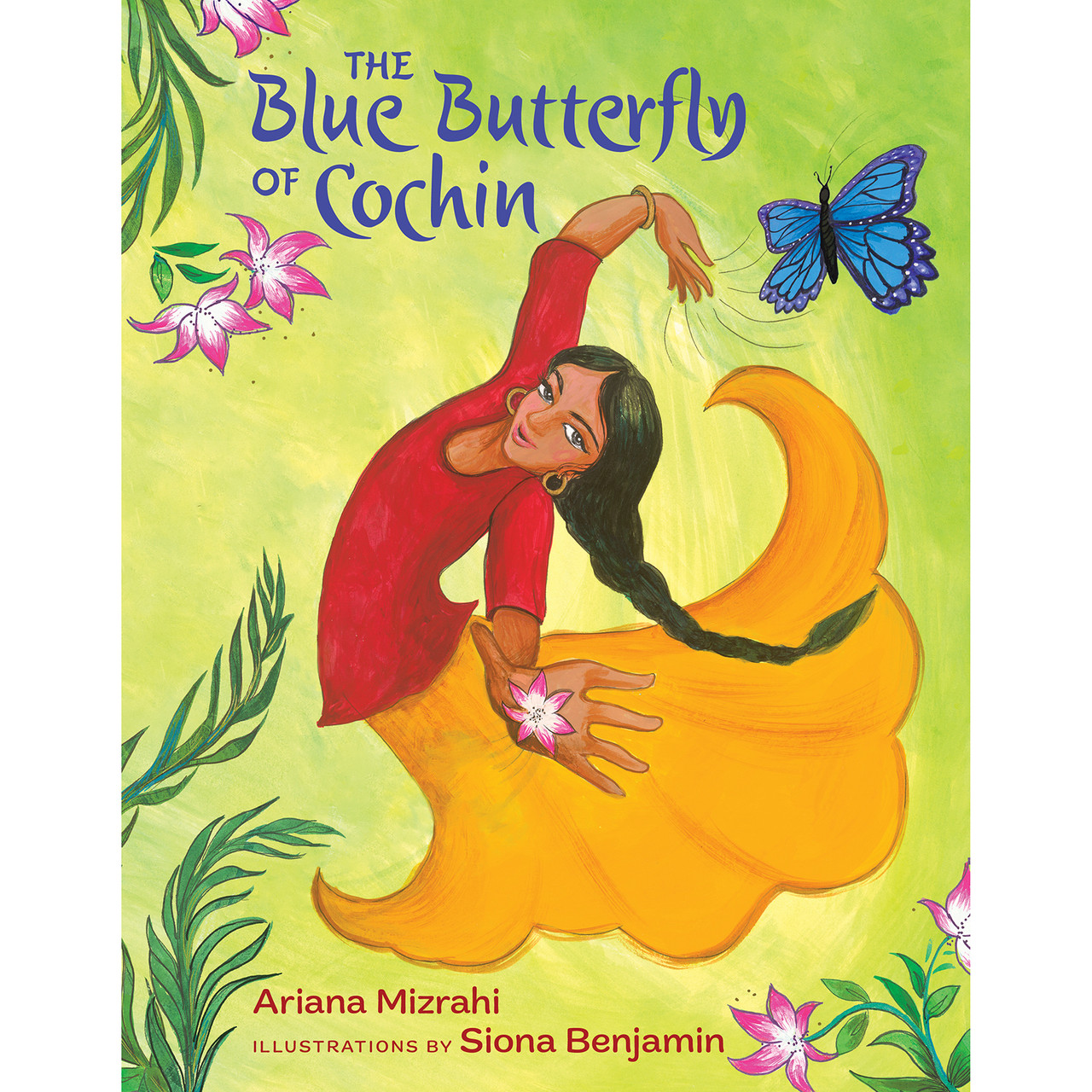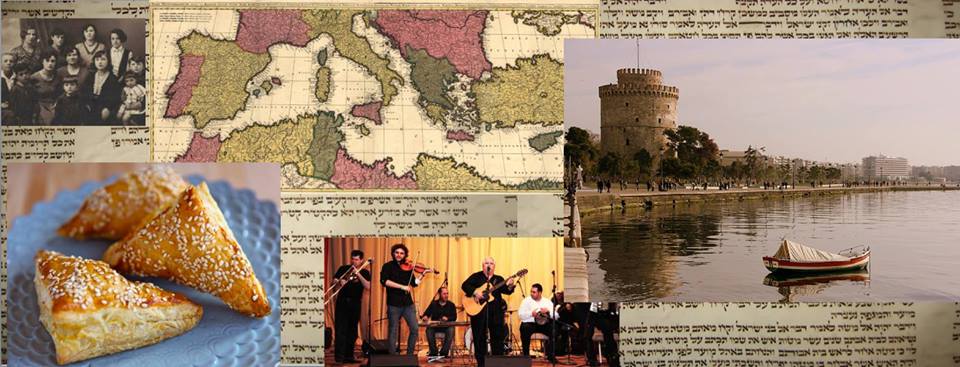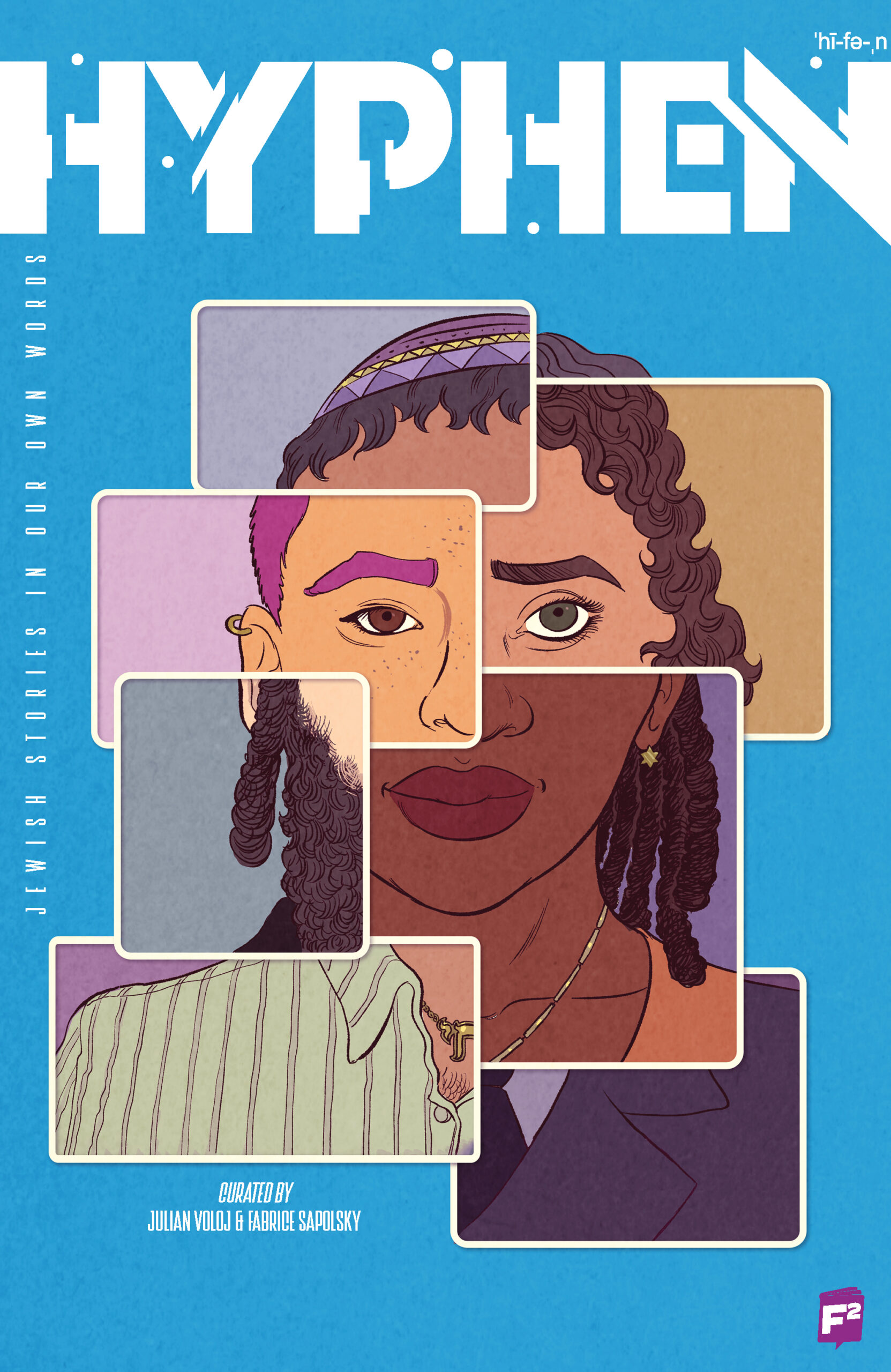A duo filled with passion and enthusiasm, Ariana Mizrahi and Siona Benjamin thoughtfully brought to life the story of the Cochini Jewish community. Through research, conversations, and a commitment to their role as storytellers of Jewish history, Ariana and Siona worked with a team of dedicated partners to ensure the story was told with integrity. The financial support and firsthand knowledge of the members of the Indian Jewish Heritage Center (IJHC) and the Cochin Jewish Heritage Center (CJHC), helped to bring an authentic voice and accurate representation to all elements of The Blue Butterfly of Cochin.
The Blue Butterfly of Cochin follows the story of Leah and her family who leave their home in Cochin, India to make aliyah (a return) to the land of Israel. Ariana and Siona both felt the importance of telling the story of the Cochini Jew’s aliyah as a journey from strength to strength. Many historic accounts of aliyah have been out of the necessity of Jews to flee where they were living and journey to the safety of Israel. Ariana and Siona explained that the Jews of Cochin, however, weren’t leaving India because of persecution, or because they weren’t happy. On the contrary, they were thriving in India. The Jews of Cochin chose to make aliyah for the sole desire of returning to their ancestral homeland.

Ariana’s experiences as an immigrant from Buenos Aires to New York, and Siona’s identity as a Jew from India with Bene Israel and Cochini roots, connected them both to the story of The Blue Butterfly of Cochin. Their personal stories of immigration, finding home, and connecting to Israel were reflected in the book and their creative process.
The blue butterfly itself is a symbol of the unique yet universal nature of the immigrant experience. Ariana explained the role of the blue butterfly in telling the story of the Cochini Jews.
“The blue butterfly that exists in India is known to fly long distances and, get this, is also found in Israel. And the reason you find the butterfly in Israel is because it is finding a new home – just like the Cochini Jews of India on their way to Israel. For the Cochini Jews the butterfly is India. For me, the blue butterfly could be Buenos Aires. There are many elements to the blue butterfly. The immigrant story is unique to each immigrant, but there are also commonalities.”
Ariana and Siona’s commitment to the authentic representation of the history and experience of the Cochini Jews were also essential to their creative process. Both the book’s publisher, Kalaniot Books, and Ariana felt that there was an element of the story that could only be told by someone who had lived it. Ariana explained, “We cannot tell the story of Jewish history without telling the story of Indian Jewish history, or of Jewish African history, and the Jewish history of all. Even if I am not part of the Cochini Jewish community, I feel connected, and I feel responsible.” Ariana spent hours on calls with members of the Cochini Jewish community, gaining an understanding of their history, customs, families, and personal lives.
Be’chol Lashon was honored to be a part of the development of The Blue Butterfly of Cochin. The book’s publisher, Kalaniot Books expressed, “In our quest to show the diversity of the Jewish experience, we were thrilled when Julian Voloj of Be’chol Lashon, came to us with Ariana Mizrahi’s appealing manuscript and Siona Benjamin’s stunning illustration portfolio.” Be’chol Lashon also helped provide guidance around creating relationships with the Cochini Jewish community and authentic representation in storytelling.

Over the summer, Ariana had the opportunity to visit the people and synagogue of the Cochini Jews in the Negev region of Southern Israel. For Ariana being in the place that she had spent so much time researching and hearing stories about was incredibly powerful. She also had the chance to meet a few of her collaborators that she previously had only got to speak to through Zoom. Ariana’s passion around the power of storytelling came fully to life in her visit to Israel. In her meetings either in person or on Zoom, she was told time and time again how excited people were to be able to have a story that so thoughtfully brought to life their culture, and to have a book to share with their children and grandchildren for generations.

Ariana visiting the synagogue in the Cochini community in Israel
For Ariana, “This history and this story should be known as a part of Jewish history at large. This is what I hope this book will help achieve.” In the process of building relationships, gaining stories, and making new connections, additional layers of unique elements of Cochin Jewish culture were added to the story. For example, the book includes Cochini Jewish cultural elements such as the use of a Shabbat lamp, the use of two bimas in the synagogue, and showing that Cochini Jews didn’t pray with their shoes on in the synagogue. The book was also an opportunity to show the unique role that women play historically and currently in the community. Unlike other Jewish communities, the Cochini Jewish community came to Israel with both their men and women knowing how to read and write Hebrew, which allowed them to have an immediate connection to the land.
 Siona did extensive research in creating the illustrations for The Blue Butterfly of Cochin as well. Siona was also excited about the opportunity to represent the Indian Jewish community through her illustration. Siona is also an Indian Jew, but from the Bene Israel community, which has practices and cultural elements unique and distinct from the Cochini Indian Jewish community. During her research, Siona went on to cover the walls of her home with visual inspiration in order to get the details of the story correct. For example, Siona shared, “I had to find out what the synagogues looked liked, the details in the Shabbat lamp, what was worn on a regular day versus what was worn on Shabbat.” While online research was instrumental, Siona’s personal conversations were important as well.
Siona did extensive research in creating the illustrations for The Blue Butterfly of Cochin as well. Siona was also excited about the opportunity to represent the Indian Jewish community through her illustration. Siona is also an Indian Jew, but from the Bene Israel community, which has practices and cultural elements unique and distinct from the Cochini Indian Jewish community. During her research, Siona went on to cover the walls of her home with visual inspiration in order to get the details of the story correct. For example, Siona shared, “I had to find out what the synagogues looked liked, the details in the Shabbat lamp, what was worn on a regular day versus what was worn on Shabbat.” While online research was instrumental, Siona’s personal conversations were important as well.

The photo collage that helped inspire Siona’s artwork
One of the ways that Siona was able to research The Blue Butterfly of Cochin was by developing a relationship with a Cochini woman living in Israel named Tirza Muttah Lavi, who was a member of the Indian Jewish Heritage Center. Siona went online to research and decide who she thought the character of Leah should look like. In her research, she found an old black and white photo and instantly felt that this photo was exactly who Leah should be in the book. Siona brought the photo to the publishers and they agreed. With excitement, Siona shared the photo with Tirza as well. To both of their surprise, Tirza told Siona, “That is my family!” Tirza went on to explain that the girl who Siona wanted to fashion Leah’s likeness was Tirza’s older sister, who would go on to be a prominent doctor in Israel.

Photo of Tirza’s sister who was the visual inspiration behind Leah
The Blue Butterfly of Cochin held deepening layers of personal significance to both Ariana and Siona. Ariana shared one of the ways that her identities influenced her passion for this project. She said, “As an immigrant, as a Hispanic Jew, as someone ‘who is not the usual’ I appreciate the differences in our stories.” Ariana then referenced a fellowship that she did with Be’chol Lashon, that brought together Jews from backgrounds around the world to engage in the shared act of storytelling and identity building. “We spoke many times as fellows about amplifying these stories. In storytelling, I view myself as a partner. I could not have told this story without being in partnership with the Jewish Indian Heritage Center and the Cochini Jewish Heritage Center. We were all together bringing this story together. And Siona, I could never imagine anyone else illustrating this story.”
Ariana had her own special connection to the Negev and the Cochini Jewish community. Her grandparents made aliyah in the 1950s in the same area that the Cochini Jews would make aliyah. Ariana expressed that, “I like to imagine that when the Cochini Jews saw a sunny day, my grandparents also saw a sunny day.” Both of Ariana’s grandparents were also storytellers. Ariana knew that her main character was a storyteller as well, and given that her grandma’s name was Leah and the special connection her family had to the same land as the Cochini Jews, the name Leah felt incredibly fitting. However, Ariana was only going to be willing to use the name if it was a name that also had significance in the Cochini community as well. So she spoke to Tirza and said, “Leah was mother’s name as well.” And with that, the character’s name of Leah was solidified.

Photo of Tirza’s family, a Cochini family in Israel
Ariana shared her gratitude to the many people who collaborated and offered important insights from the Cochini community.
“I’m eternally grateful to Tirza Muttath Lavi, Avner Isaac, Mira Elia and Ruth Greenfield for their partnership. I also personally want to thank Yohai Abraham who opened the synagogue especially for me to see, and gave us an unforgettable tour. Many people participated in these interviews helping our story remain authentic.”

Ariana and Tirza in Israel
Siona and Ariana both appreciate The Blue Butterfly of Cochin’s ability to tell the story of diaspora. For Ariana, “This book brings up a lot of questions about how we understand home. How do I embrace a new home? Who am I here? What is my identity here versus where I was? These are important questions that children ask.” While The Blue Butterfly of Cochin offers readers an understanding of the layers of the immigrant experience and the diaspora, the book expresses the ways that every family has layers of history and identity. Siona went on to say, “I hope that this book encourages families to ask each other questions about their own family history and identity. I think this story is a chance for young people to feel good about their identity and want to celebrate it.”

The celebration of individual and collective identity were central to Ariana’s writing and Siona’s illustrations. “Embracing who we are is a superpower,” said Ariana. Siona agreed with Ariana and added that as much as The Blue Butterfly of Cochin is a story about celebrating who we are as individuals, it is also a story about understanding who we are “in a bigger picture.” For both Siona and Ariana, this book offers an opportunity to celebrate unique Jewish journeys that are part of their history, and also, stories that add to the greater Jewish tapestry.
The Blue Butterfly of Cochin is available here! You can also book Ariana and Siona for a speaking engagement at your organization for a book talk, a presentation for religious school students, an overview of their creative processes or more. The Blue Butterfly of Cochin will add a vibrant connection to history while encouraging question asking and celebrating the diversity of our identities. As Ariana concluded, “I hope this is a chance for us to celebrate the many threads of Jewish history.”








